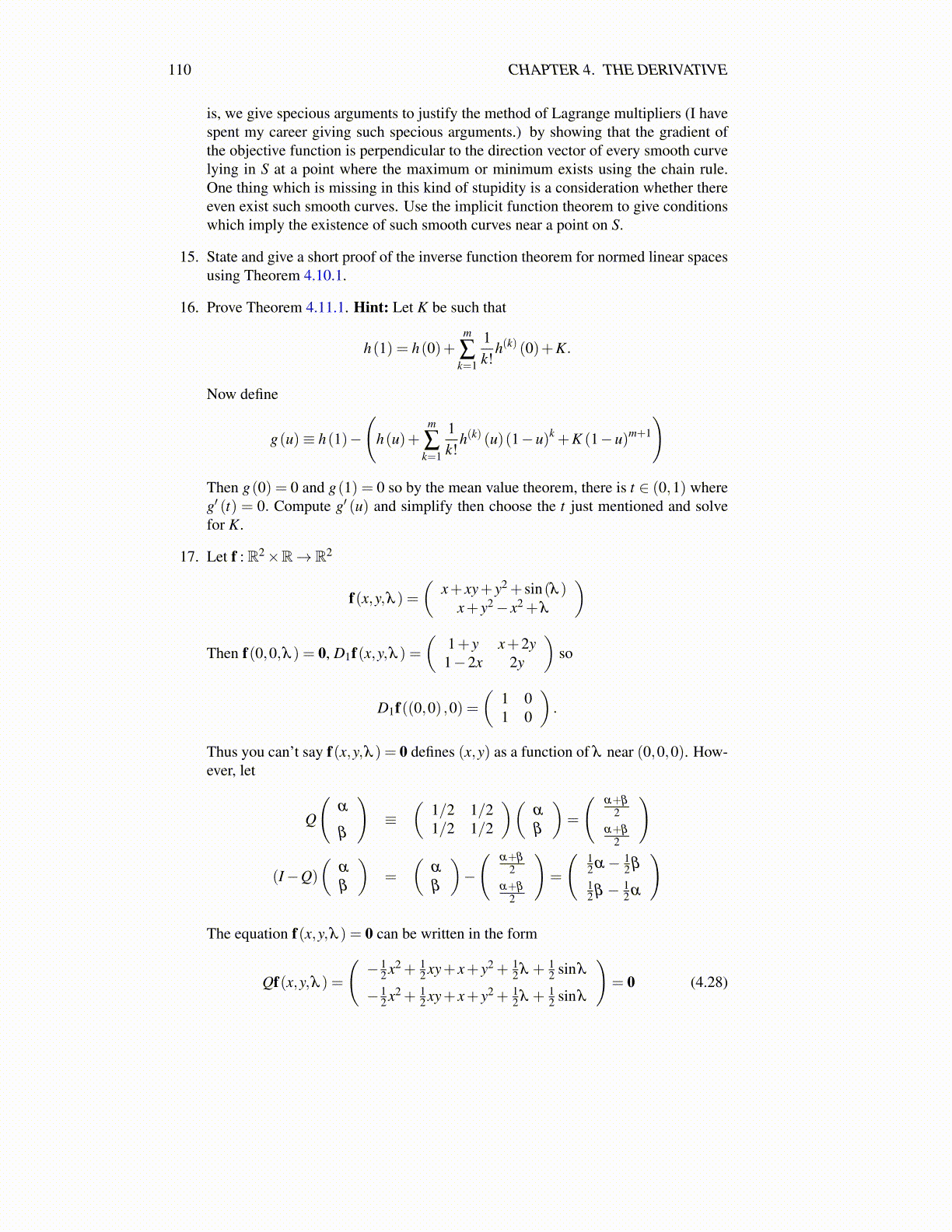
110 CHAPTER 4. THE DERIVATIVE
is, we give specious arguments to justify the method of Lagrange multipliers (I havespent my career giving such specious arguments.) by showing that the gradient ofthe objective function is perpendicular to the direction vector of every smooth curvelying in S at a point where the maximum or minimum exists using the chain rule.One thing which is missing in this kind of stupidity is a consideration whether thereeven exist such smooth curves. Use the implicit function theorem to give conditionswhich imply the existence of such smooth curves near a point on S.
15. State and give a short proof of the inverse function theorem for normed linear spacesusing Theorem 4.10.1.
16. Prove Theorem 4.11.1. Hint: Let K be such that
h(1) = h(0)+m
∑k=1
1k!
h(k) (0)+K.
Now define
g(u)≡ h(1)−
(h(u)+
m
∑k=1
1k!
h(k) (u)(1−u)k +K (1−u)m+1
)
Then g(0) = 0 and g(1) = 0 so by the mean value theorem, there is t ∈ (0,1) whereg′ (t) = 0. Compute g′ (u) and simplify then choose the t just mentioned and solvefor K.
17. Let f : R2×R→ R2
f(x,y,λ ) =(
x+ xy+ y2 + sin(λ )x+ y2− x2 +λ
)
Then f(0,0,λ ) = 0, D1f(x,y,λ ) =(
1+ y x+2y1−2x 2y
)so
D1f((0,0) ,0) =(
1 01 0
).
Thus you can’t say f(x,y,λ ) = 0 defines (x,y) as a function of λ near (0,0,0). How-ever, let
Q
(α
β
)≡
(1/2 1/21/2 1/2
)(α
β
)=
(α+β
2α+β
2
)
(I−Q)
(α
β
)=
(α
β
)−
(α+β
2α+β
2
)=
(12 α− 1
2 β
12 β − 1
2 α
)
The equation f(x,y,λ ) = 0 can be written in the form
Qf(x,y,λ ) =
(− 1
2 x2 + 12 xy+ x+ y2 + 1
2 λ + 12 sinλ
− 12 x2 + 1
2 xy+ x+ y2 + 12 λ + 1
2 sinλ
)= 0 (4.28)